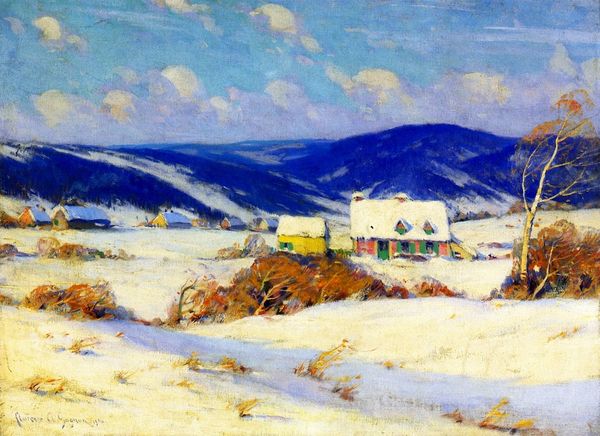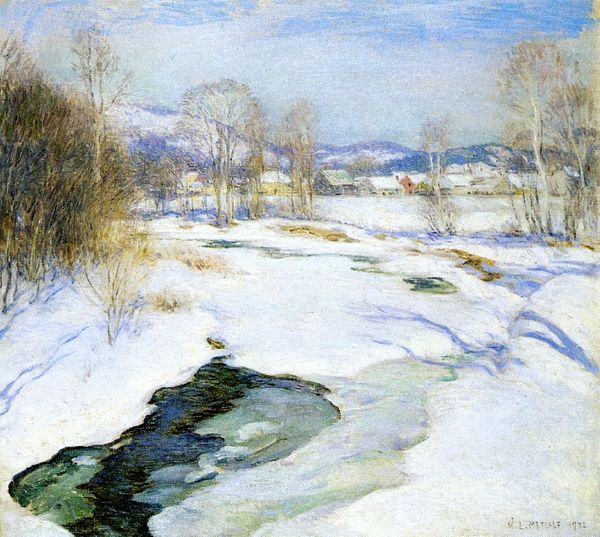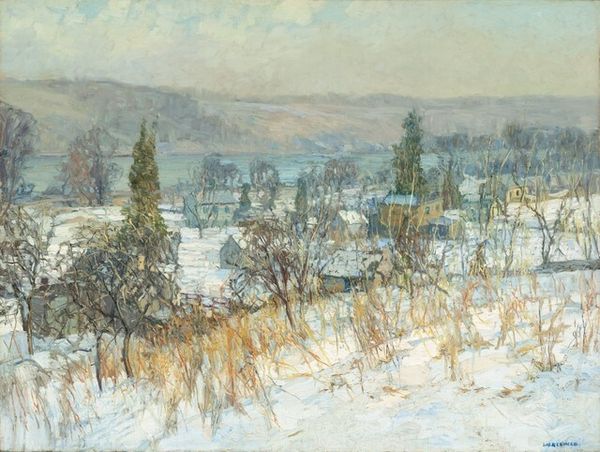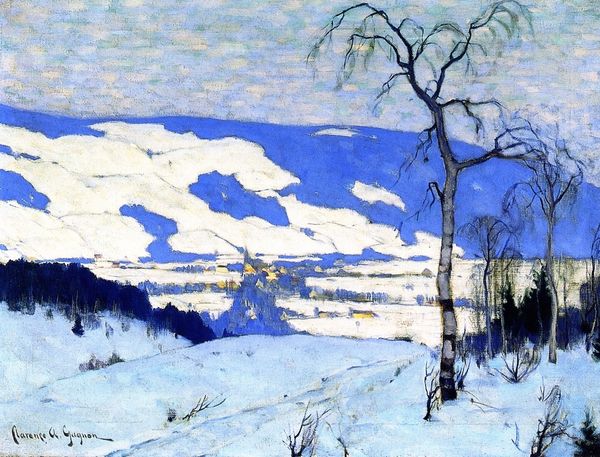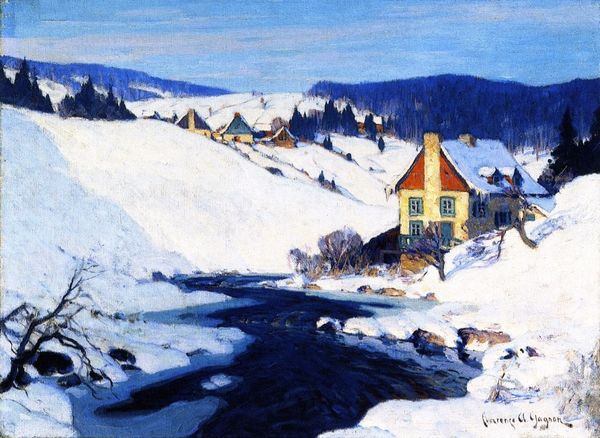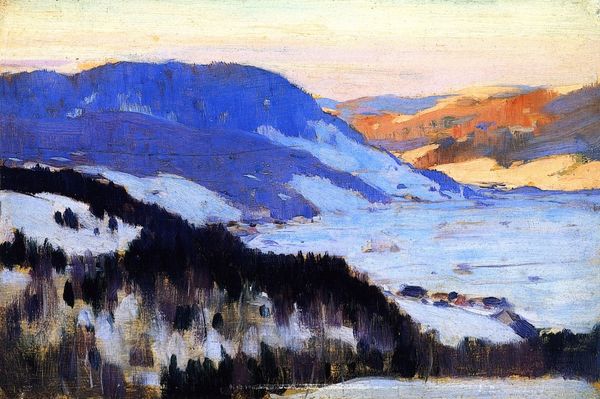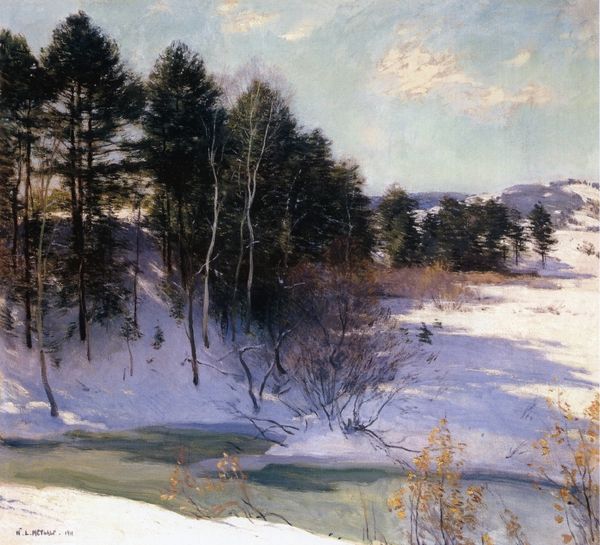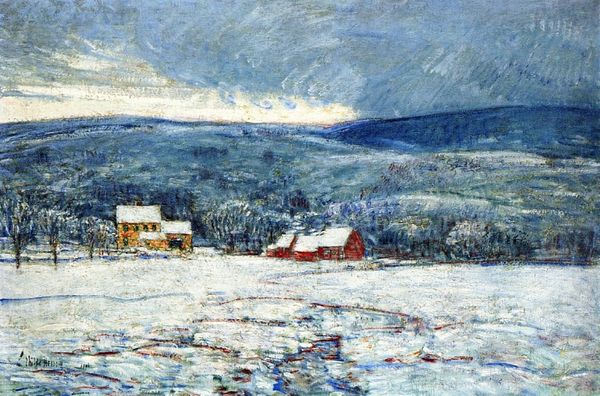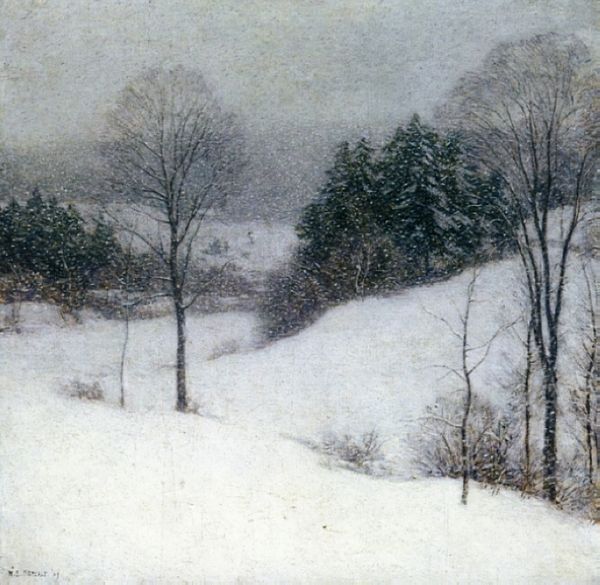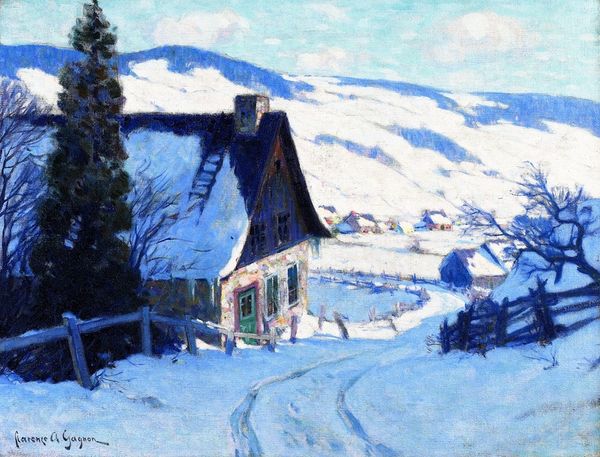
Copyright: Public domain
Clarence Gagnon, a Quebec artist, painted "Baie-Saint-Paul" to capture the charm of rural Quebec. His work reflects a deep connection to his homeland, at a time when many artists were drawn to European trends. Gagnon, as a French-Canadian artist, navigated his identity within a complex cultural landscape. During his time, Quebec was experiencing significant social and cultural changes, with many people concerned about preserving their cultural identity amidst growing Anglophone influence. Gagnon's paintings of Quebec’s landscapes and rural life can be viewed as an act of cultural preservation. The depiction of the snow-covered village evokes a sense of tranquility. Gagnon avoids the depiction of labor, and presents us with an idealized, untouched landscape. While this is beautiful, it obscures the realities of rural life, particularly for the working class. Gagnon’s Baie-Saint-Paul invites us to consider how representations of place can reflect both personal identity and broader cultural narratives. The painting prompts us to reflect on what it means to belong to a place, and the complexities of preserving cultural heritage in a changing world.
Comments
No comments
Be the first to comment and join the conversation on the ultimate creative platform.
